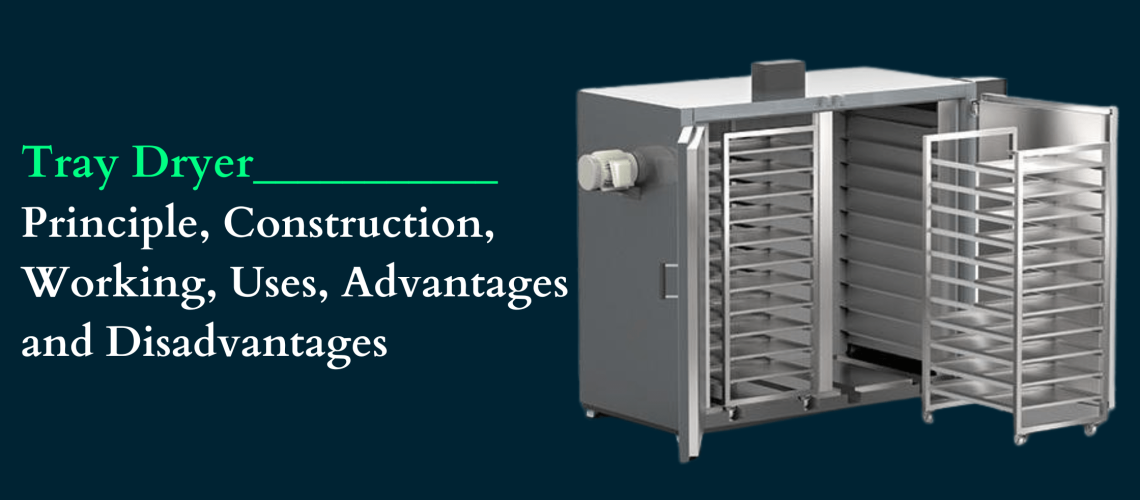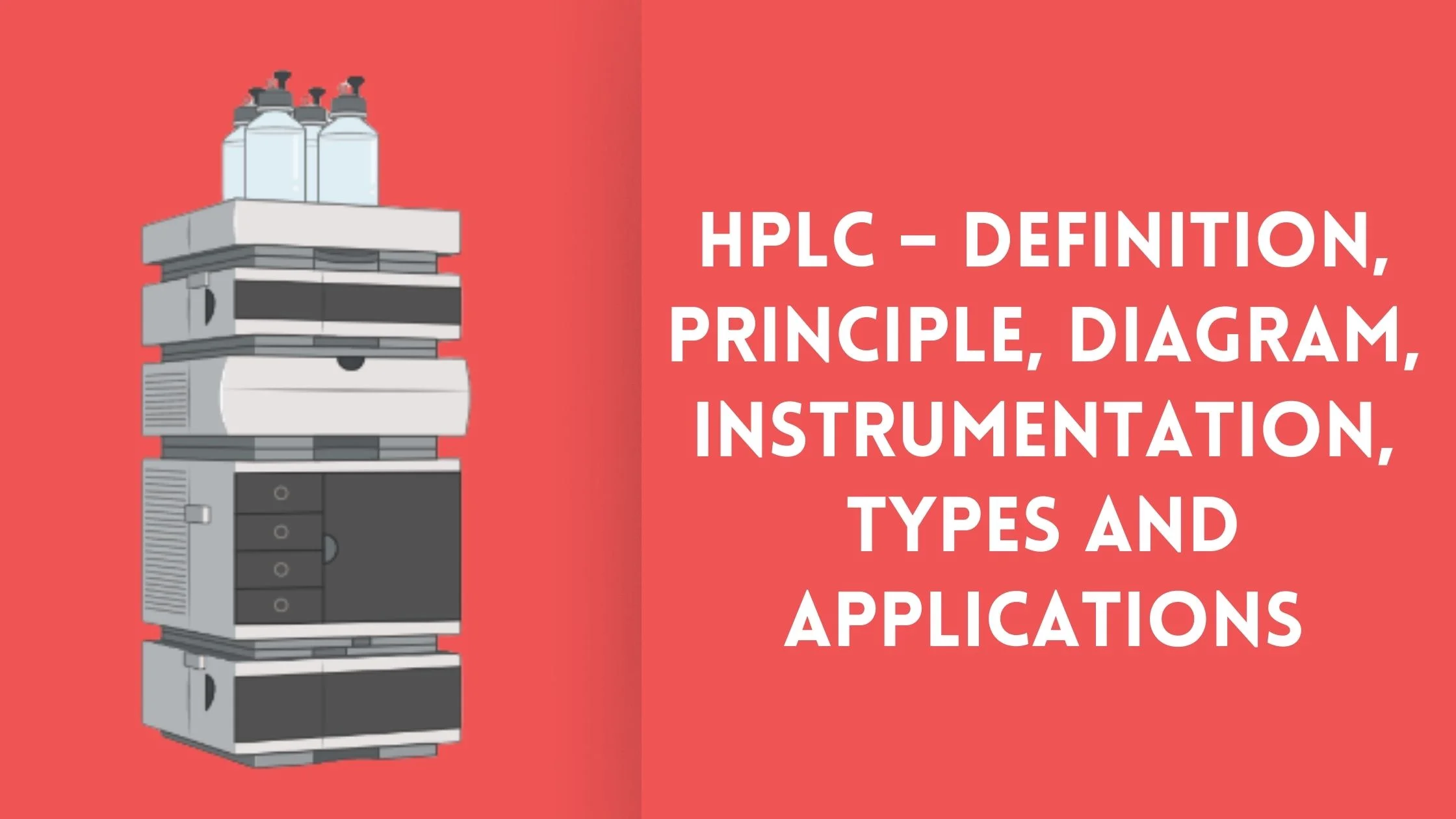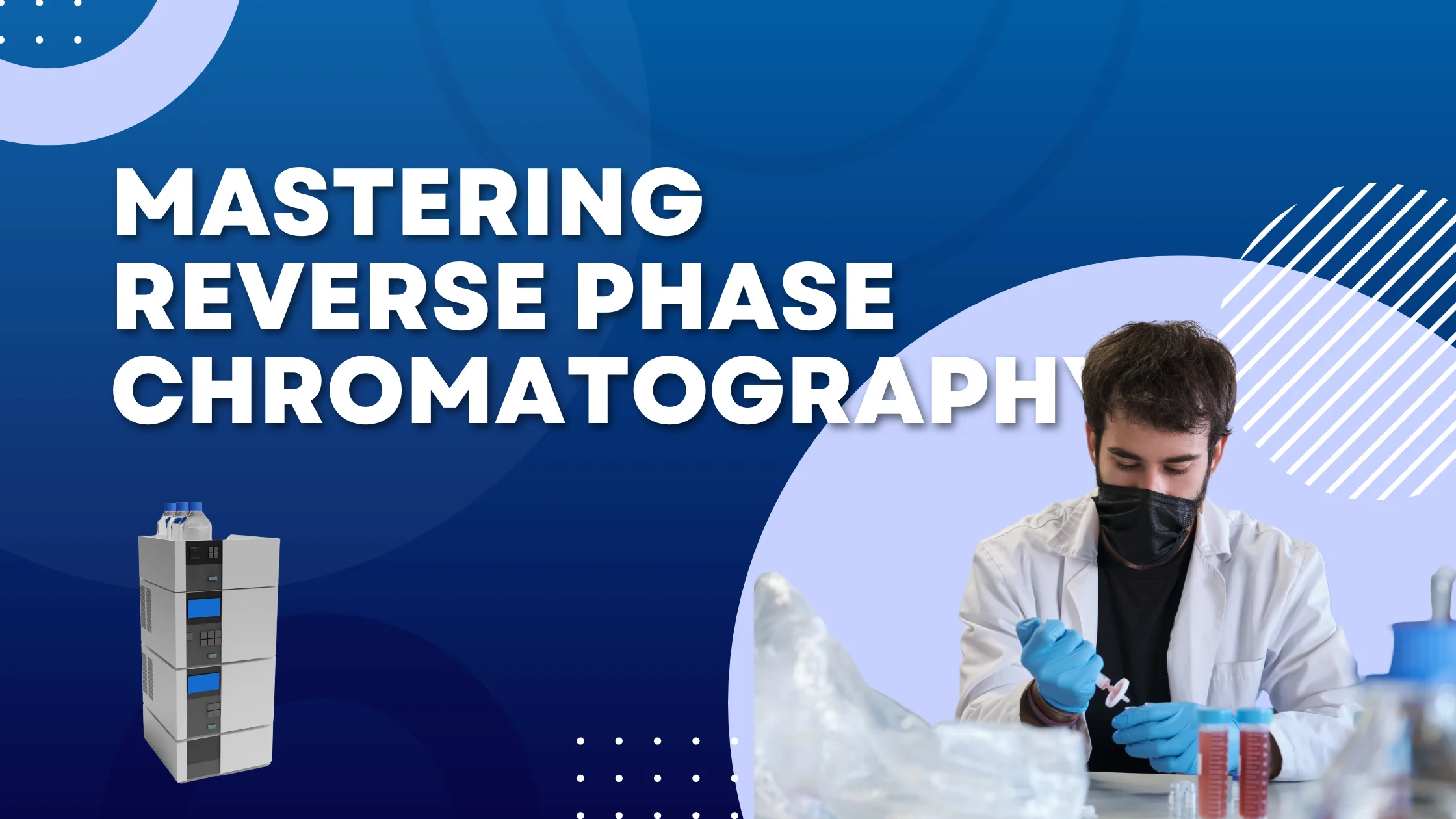Drying is a process of removal of tiny amounts of water or any other forms of liquid from a material on application of heat. Drying is not an economical and cost-effective process industrially when compared to other methods of liquid removal like filter press or centrifuge. It is always cheaper to remove liquid by mechanical methods rather than thermal ways. Tray dryer is a conventional insulated chamber and consists of perforated material holding trays placed in compartments one over other on a trolley. Tray dryers are abundantly used in large scale manufacturing processes in industries like pharmaceuticals, food processing facilities etc. working on effective drying process.
Principle of Tray dryer:
In tray dryer, hot air generated by the electric heaters or steam in radiator coils is continuously circulated through the perforated trays with material to be dried. Forced convection heating takes place to remove moisture from the solids placed on trays. Simultaneously, moist air is removed partially. Blower fans or suction devices are installed inside to ensure proper circulation and transfer of heat.
Construction of Tray dryer:
A tray dryer (Refer above figure) consists of a rectangular chamber which is fabricated out of a rigid angle iron frame with double walled panels insulated with the best quality compressed fiberglass and with a rigid door fitted with strong hinges and an efficient locking system. Trays are placed inside the heating chamber. The number of trays may vary with the size of the dryer and also based on the customer requirements. Dryers of laboratory size may contain a minimum of three trays, whereas dryers of industry size may contain more than 25 trays. Each tray is rectangular or square and are usually loaded from 10 to 100 millimetres deep. The distance between the bottom of upper tray and (upper) surface of the substance loaded in the subsequent tray must be not less than 35 millimetres. Alternately the trays can be placed in trucks on wheels, which can be rolled into and out of chamber. Two such trucks can be arranged inside dryer. Dryer is fitted with a fan for circulating air over the trays. Electrically heated elements are provided inside to heat the air. In a few models, steam is used as a heating element where steam is propelled inside the double jacketed chamber of the dryer. This is due to the fact that steam is cheap, energy efficient and easy to produce. In the corner of the chamber, direction vanes are placed to direct-air in the expected path.
Working of Tray dryer:

Working on tray dryers is the most common and are widely used in the pharmaceutical industry. As a part of its standard operating procedure, wet solid is loaded into the trays and are placed in the chamber. Filtered fresh air is introduced through the inlet, and is allowed to pass through the heaters arranged just before entering the trays and get heated up. The hot air is then passed through the trays and is actively circulated by means of blower fans at 2 to 5 metre per second. Eventually, the solid bed gets heated up and water evaporates from the product surface. Thereby the water diffuses from the interior of the solid by capillary action. Hot air circulating at such speeds usually are turbulent in nature. Such turbulent air flow lowers the partial vapour pressure in the atmosphere and also reduces the thickness of the air boundary layer over the product. The evaporated water is picked up by air. These events occur in a single pass of air. The time of contact is short and the amount of water picked up in a single pass is small. Therefore, 80 to 90% of the discharged air is circulated back through the fans and 10 to 20% of fresh air is introduced. Moist air is discharged through outlet. Thus, constant temperature and uniform airflow over the material can be maintained for achieving uniform drying.
In case of wet granules (as in tablets and capsules) drying is continued until the desired moisture content is obtained. Sample of the product is taken at designated intervals to check the total moisture content in the product. Once the desired moisture content is achieved then the drying is stopped and the product is unloaded. At the end of drying, trays (trucks) are pulled out of the chamber and taken to a tray dumping station. Standard operating procedures are well established in the pharmaceutical industry which explains about the operation and working of tray dryer.
Uses of Tray dryer:
Materials which are sticky in nature, plastic substances, granular mass or crystalline materials, precipitants and pastes can be dried in a tray dryer. Other materials like crude drugs, chemical powders, tablet granules, glassware, parts of equipment are also dried using tray dryer.
Advantages of Tray Dryer:
- It is simple to use and clean while working on tray dryer.
- Operating parameters can be controlled more easily and effectively.
- It is operated on batch wise so each batch can be handled as a separate entity. Batch wise drying is extensively used in the pharmaceutical industry.
- Tray dryers of same size and capacity can be readily adjusted for use in drying a wide variety of materials.
- Valuable products can be handles efficiently.
- Loading and unloading of materials in tray dryers can be handled precisely without any spillage and losses.
- These dryers are used to dry materials with higher moisture content and which needs long drying hours maintaining at low temperatures consistently.
- These are used in the quality control labs to dry the cleaned glassware at controlled temperatures.
Disadvantages of Tray dryer:
- They are labour intensive and time consuming. They incur more operational costs and eats up time to load and unload the products.
- Not suitable for all types of materials like thermolabile substances, liquid slurries.
- Drying cycles are usually long and it might take approximately 2 – 42 hours per batch to dry.
- Tendency to over dry materials placed at the lower parts of racks is seldom evident
- Few tray dryers do not have perforated trays where lack of such trays would have inefficient heat transfer and mass transfer in the drying process. Finally drying only a fraction of the solid (upper surface) placed in the tray.



